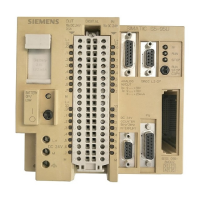Program instructions
7.10 Interrupt
S7-200 SMART
328 System Manual, V2.3, 07/2017, A5E03822230-AF
Types of interrupt events that the S7-200 SMART CPU supports
Communication port interrupts
The serial communications port of the CPU can be controlled by your program. This mode of
operating the communications port is called Freeport mode. In Freeport mode, your program
defines the baud rate, bits per character, parity, and protocol. The Receive and Transmit
interrupts are available to facilitate your program-controlled communications. Refer to the
Transmit and Receive instructions for more information.
I/O interrupts include rising/falling edge interrupts, high-speed counter interrupts, and pulse
train output interrupts. The CPU can generate an interrupt on rising and/or falling edges of
an input for input channels I0.0, I0.1, I0.2, and I0.3 (and for I7.0 and I7.1 for standard CPUs
with an optional digital input signal board). The rising edge and the falling edge events can
be captured for each of these input points. These rising/falling edge events can be used to
signify a condition that must receive immediate attention when the event happens.
Note
The CPU models CPU CR20s, CPU CR30s, CP
U CR40s, and CPU CR60s do not support
the use of signal boards.
The high-speed counter interrupts allow you to respond to conditions such as the current
value reaching the preset value, a change in counting direction that might correspond to a
reversal in the direction in which a shaft is turning, or an external reset of the counter. Each
of these high-speed counter events allows action to be taken in real time in response to high-
speed events that cannot be controlled at programmable logic controller scan speeds.
The pulse train output interrupts provide immediate notification of completion of the output of
the prescribed number of pulses. A typical use of pulse train outputs is stepper motor control.
You enable each of the above interrupts by attaching an interrupt routine to the related I/O
event.

